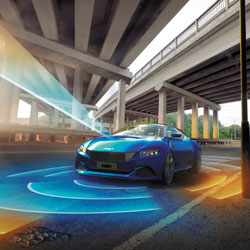 0
0








 0
0









NXP semiconductor has provided two updates to its industry-leading automotive radar product portfolio and is currently specially designed for it in 20 top OEMs around the world. The dedicated 16nm imaging radar processor NXP s32r45 has started mass production. The newly launched NXP s32r41 makes use of the advantages of 4D imaging radar to more cars. These processors cooperate with L2 + to L5 autonomous sectors to allow 4D imaging radar to perform 360 degree surround sensing.
Imaging radar expands the radar's ability to detect huge objects, and can see all the environment of the vehicle through "seeing" high-resolution points, which improves the environment mapping and scene understanding. These images can classify targets in complex urban scenes, if an easily injured road user uses a vehicle, or a motorcycle approaches a large delivery truck, or a child enters the road between parked vehicles. In addition, imaging radar can also measure speed and classify objects at the same time, with a distance of up to 300 meters, which is far beyond the range of human vision. It can also keep identifying fast-moving vehicles and distinguish them from slower vehicles or static obstacles on the driver's road, such as lost items or tires. The company updates its latest technology imaging radar processor to meet our daily needs and a safer experience
The 4D imaging radar is the first radar to provide three-in-one multi-mode radar induction in short, medium and long range operations, allowing simultaneous induction of a wide field of view around the vehicle. To achieve this, it employs an innovative architecture that pushes performance beyond the capabilities of the original sensor hardware through a low-complexity sensor configuration with 192 virtual antenna channels. This boost is achieved by combining proprietary radar hardware acceleration that delivers up to 64 times standard processor computing performance, super-resolution radar software algorithms for performing sub-degree angular resolution, and advanced MIMO waveforms that allow simultaneous operation of antenna channels. The architecture also helps overcome the limitations of other high-resolution sensors, such as lidar and high antenna number massive MIMO radars, whose cost and complexity limit their use to a limited set of use cases.
"NXP's new imaging radar processors are a key step toward improving road safety and saving lives by creating high-resolution images to enhance the detection and classification of objects, thereby shaping the way vehicles understand the world around them," said Torsten Lehmann, executive vice president and General Manager of NXP Rf Processing. . "The extended S32R family utilizes our leadership in radar processing, super-resolution algorithms and advanced MIMO waveforms to provide imaging radar advantages for the rapidly growing L2+ vehicle market."